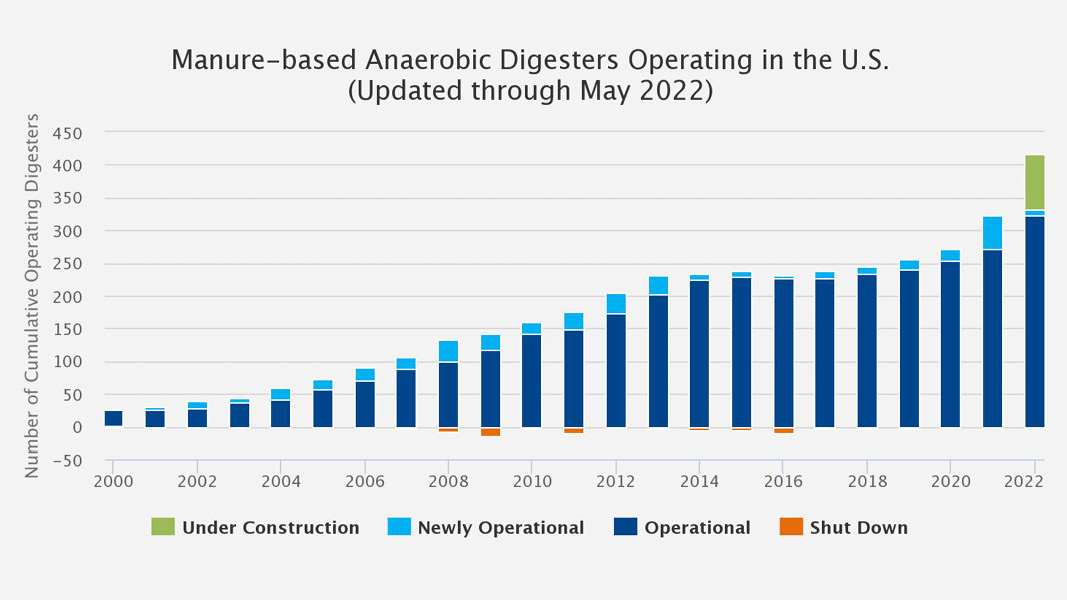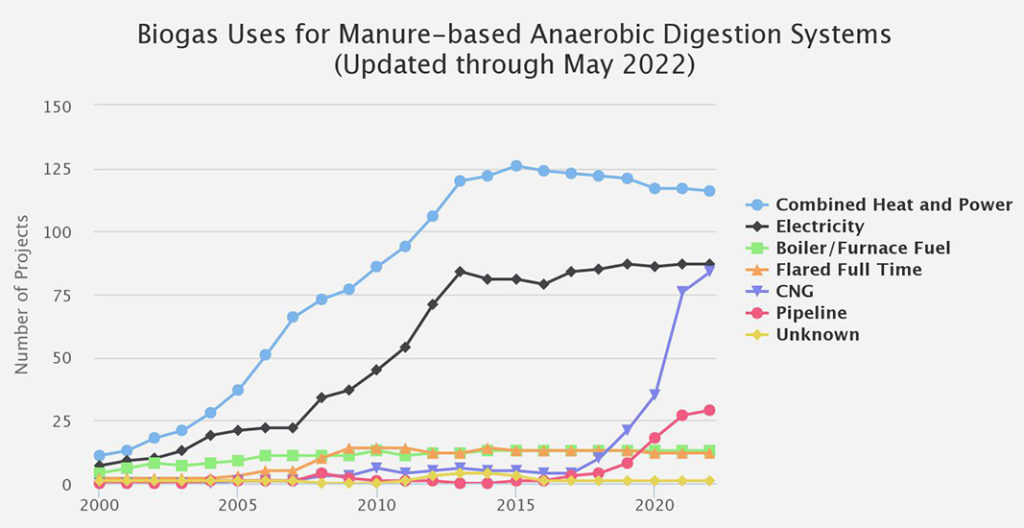Top: Graphic courtesy USEPA/AgSTAR
The U.S. Environmental Protection Agency’s AgSTAR program has been tracking development of manure-based anaerobic digestion (AD) facilities for many years. Its latest data — current through May 2022 — reports there are 331 manure-based AD systems, up from 272 in 2021. Nine new systems have come online since the beginning of 2022, and another 85 are currently under construction or undergoing modification. Of the 331 operating livestock manure digester systems, 113 are producing renewable natural gas (includes pipeline injection and compressed natural gas projects) in the United States. In terms of AD system types, 126 (38.1%) are covered lagoons, 98 (29.6%) are plug flow (modified plug flow digesters, e.g, horizontal and mixed plug flow), and 92 (27.8%) are complete mix (in tanks).
The AgSTAR program promotes the use of biogas recovery systems to reduce methane emissions from livestock waste. In calendar year 2021, manure-based ADs reduced GHG emissions by 6.09 million metric tons of CO2 equivalent (MMTCO2e). This includes 5.20 MMTCO2e direct methane reductions, and 0.89 MMTCO2e emissions avoided. From 2000 through 2021, manure-based ADs have reduced direct and indirect emissions by 54.4 MMTCO2e. A projected reduction in direct and indirect emissions of 6.23 MMTCO2e is expected from ADs on livestock farms in calendar year 2022. In 2022, manure-based AD systems are expected to generate the equivalent of approximately 1.76 million MWh of electricity. AgSTAR’s latest update has more details on the analyses it conducted.
Also new from AgSTAR are livestock Sector Fact Sheets for dairy, swine, and poultry that summarize manure management practices for specified types of livestock. These fact sheets discuss project development trends as well as incentives and barriers unique to specific livestock operation needs. For example, with the dairy sector, AgSTAR notes that “while many dairy AD systems today are operated on site, it is becoming increasingly common for a third-party company to develop and operate AD systems that process manure from multiple farms. These include centralized AD systems, or hub-and-spoke systems, that share the project risk and reward between multiple farmers and developers and reduce interconnection costs.” As of April 2021, there were 221 AD systems processing dairy manure in the U.S. AgSTAR estimates that there is potential for AD systems on approximately 2,700 additional dairy farms. The Sector Fact Sheets also provide details on the AD systems utilized and GHG emissions reductions.














